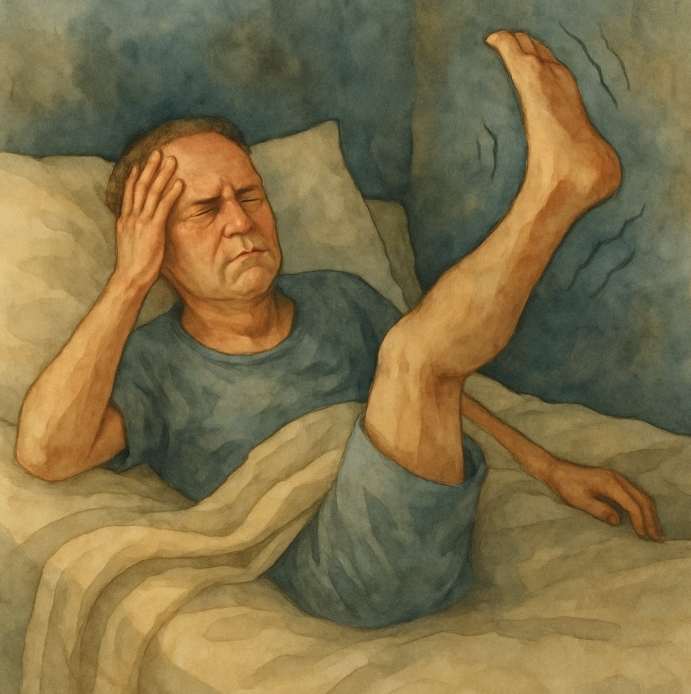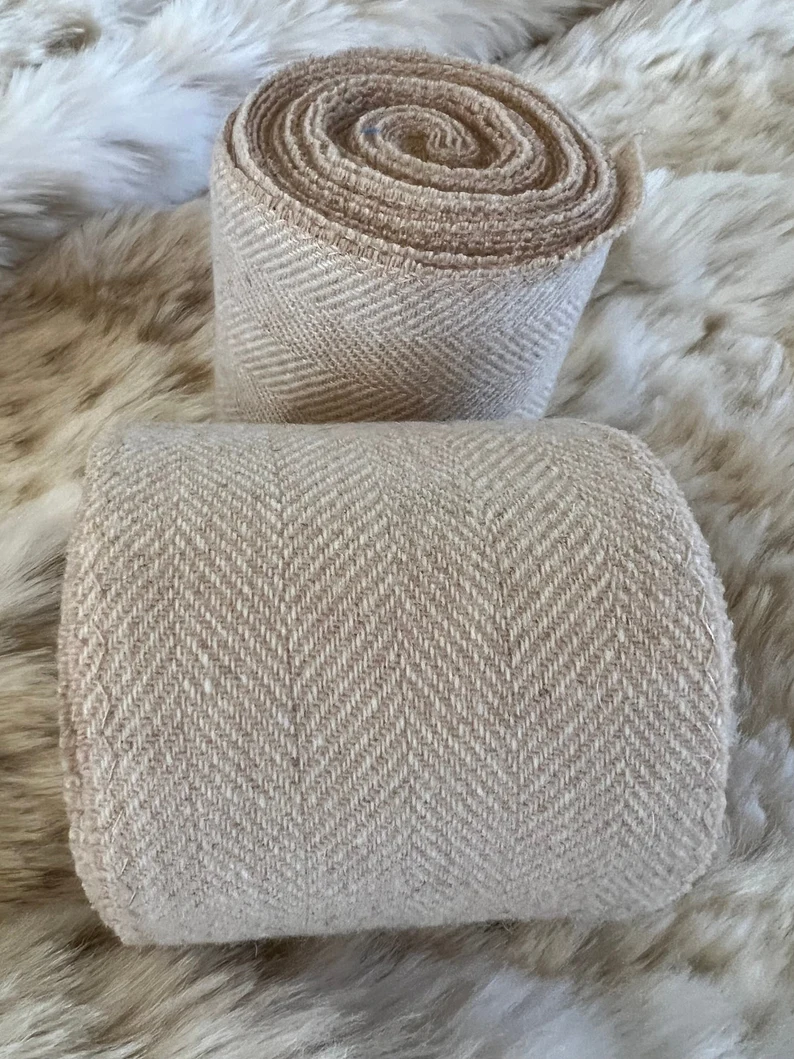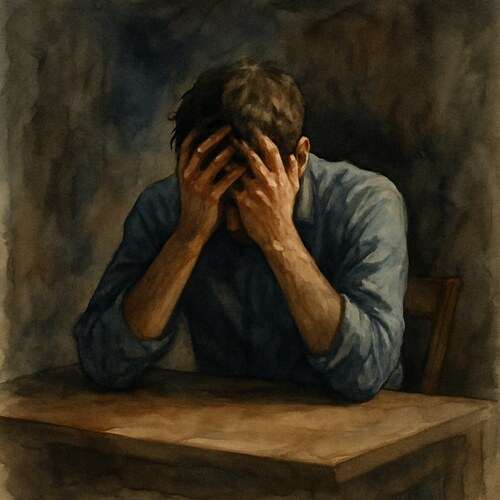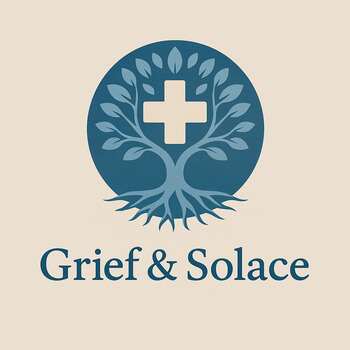Grieving Restless Leg Syndrome: Mourning the Sleep That Wouldn’t Come
Grief tied to restless leg syndrome hums beneath the surface, nights spent chasing stillness, days spent chasing rest that never arrives.

This post blends real grief with grounded knowledge. It isn’t clinical. It isn’t distant. It’s meant to sit beside you—not above you. The story you’ll read is meant to reflect what so many feel when living through or witnessing this condition: confusion, exhaustion, and quiet forms of courage.
If what you read feels familiar, please speak with your doctor. Your pain deserves more than silence.
He Dreamed of Sleep While His Body Refused to Let Go
He didn’t say much at first. Instead, he just paced…midnight, 1 a.m., 2:30. Back and forth down the hallway, as if something was waiting to break free within him, granting him the rest he so desperately sought.
I could hear the floorboards creaking while I lay in bed, alone. Sometimes he’d try the couch, sometimes the floor. Once, I found him standing barefoot in the bathtub, claiming the cold porcelain helped “a little.”
He described the feeling like lightning coursing beneath his skin. His bones would vibrate, as if something inside him was screaming to move, even when all he craved was stillness.
🧠 Symptoms:
– An overwhelming, irresistible urge to move legs, especially at night
– Uncomfortable sensations like crawling, creeping, pulling, throbbing, aching, itching, or electric feelings
– Symptoms triggered by rest (sitting or lying down)
– Temporary relief with movement (stretching, pacing)
– Nighttime leg twitching (periodic limb movement of sleep)
– Usually affects both legs and less often arms
– Symptoms may fluctuate or worsen over time
They diagnosed him with Restless Legs Syndrome. They called it “common,” said it wasn’t dangerous. Their advice? “Cut back on caffeine” and try stretching before bed.
But no one who handed out those suggestions ever paced circles into their carpet at 3 a.m. No one who said, “just relax,” ever felt the rebellion of their limbs night after night, turning sleep into a cruel punishment.
He stopped sleeping in our bed. He didn’t want to keep me up. He didn’t want me to witness him in that state—restless, ragged, ashamed of how trivial the condition sounded when he spoke of it.
But it wasn’t trivial. It robbed him of hours. It stole clarity. It took peace…
By day, he was sluggish, snapping when he didn’t intend to, forgetting things, missing steps. He felt like a ghost of himself, not because he was sick, but because he couldn’t find rest.
Complications:
– Sleep disruption and fatigue
– Daytime drowsiness
– Depression and reduced quality of life
– Difficulty traveling and socializing due to constant urge to move
He didn’t chase dreams…he chased stillness. And when it arrived, even for an hour, it felt like salvation.
Causes:
– Often no clear cause
– Suspected links include dopamine imbalance
– Genetic predisposition, especially if symptoms start before age 40
– Pregnancy, especially in the third trimester (usually resolves postpartum)
There was a grief in it. Not loud, not dramatic, but slow and gnawing, the kind that consumes joy and replaces it with guilt.
He tried medications. Some provided relief, while others did nothing at all. Some left him foggier, burdened in all the areas that didn’t twitch.
Yet, through it all, he kept trying. He continued to rise every morning after nights where sleep came in broken fragments. He showed up for work, for fatherhood, for life…even if it meant dragging himself through each hour with legs that hadn’t forgiven him.
And hope? It existed in those fleeting moments between flares, in the stillness he fought to grasp, in the nights where sleep didn’t feel like a battle.
Risk Factors:
– Iron deficiency
– Peripheral neuropathy (diabetes, alcohol use)
– Kidney failure (with anemia)
– Spinal cord damage or compression
– Parkinson’s disease
– More common in women and as age increases
📘 Diagnosis & Treatment
**Diagnosis**
– Clinical criteria from the International RLS Study Group:
– Urge to move legs with uncomfortable sensations
– Symptoms worsen with rest
– Relieved by movement
– Worse in evening/night
– Not explained by other conditions
– Additional tests: iron panel, neurological exam, sleep study if other sleep disorders suspected
**Treatment**
*Addressing Underlying Causes:*
– Iron supplementation if deficiency is confirmed
*Lifestyle Strategies:*
– Good sleep hygiene
– Regular moderate exercise
– Avoid caffeine (coffee, tea, soda, chocolate)
– Warm or cool baths, leg massage, vibrating pads, compression wraps
*Medications:*
– **Calcium channel modulators:** gabapentin, pregabalin (side effects: dizziness, weight gain, mental fog)
– **Dopamine agonists:** pramipexole, ropinirole, rotigotine (may cause augmentation or compulsive behaviors)
– **Opioids:** low-dose oxycodone, hydrocodone, buprenorphine (for severe cases)
– **Avoid:** certain antidepressants, antihistamines, antipsychotics that worsen symptoms
**Living With It**
RLS isn’t “just a twitch”—it’s a silent thief of sleep and peace. It manifests in pacing, aching, frustration—an invisible torment curling around your calves at night, making rest elusive. You stretch, you ache, and still, you’re expected to function.
The grief is quiet but persistent: the unraveling of sleep, the erosion of calm, the feeling of helplessness. It’s trying to explain a restless, writhing beneath the skin that others can’t see. But you are not imagining it. You are not overreacting. You are not alone.
I know this is heavy, and I understand that the road ahead may feel like a tangle of loss and unanswered questions. But please hear this: you are not broken because you are hurting; you are not weak because you are afraid. You are living through something real, and survival itself is a kind of grace. You are allowed to struggle, you are allowed to hope, and you are allowed to not have all the answers today. Whatever comes next, you do not face it empty-handed; you carry every moment of love that shaped you, and that will always be enough to keep going.
🎀 Gifts to help With Restless Leg Syndrome
🏥 Everyday Comforts for Everyday Battles
Managing Restless Leg Syndrome often means needing a little extra help.
Sometimes it’s about restoring dignity, ease, or simply getting through the day with less pain.
These carefully chosen tools aren’t just items; they’re small bridges back to living.
This section is about finding practical support, never shame.
Leg Wraps – Pressure That Settles What Won’t Stay Still
RLS makes stillness unbearable. These weighted leg wraps provide deep pressure stimulation to calm the nervous system and reduce the urge to move. Adjustable, soft, and usable while sitting or lying down. It’s not sedation. It’s a physical answer for nerves that can’t shut up.
🌿 Paths to Healing Beyond the Map
Sometimes traditional medicine isn’t enough.
If you’re exploring gentle, alternative options to help with Restless Leg Syndrome,
you might find comfort in plant-based compounds like **CBD or CBG**.
*This section is not medical advice, just a door left open.*
USA Medical Sleep Nighttime Calm for the Body That Rejects Rest
RLS often gets worse at night, wrecking sleep and stealing sanity. This Sleep + Stress Pack combines CBD with calming herbs and nervous system support to help ease tension and reduce the frequency of restless surges. It won’t stop the twitch—but it may finally give the brain a chance to drift.
Need a Different Path Forward?
Every journey through grief looks different. Choose the next step that speaks to where you are now:
When You're Ready to Start Healing
Healing doesn’t mean forgetting.
It means finding small ways to carry your grief with strength and grace.
These are the stories, tools, and gentle steps to begin walking forward…at your own pace.
When You're Still in the Thick of It
Sometimes healing feels like a lie.
If you’re not ready to move on…if the pain still roars louder than the world wants to hear…this is the place where you’re allowed to feel it.
No sugarcoating. No pretending. Just truth.
When You're Holding on to Who’s Still Here
Grief reminds us to love louder.
If someone you love is still with you, this is your place to celebrate them, honor them, and create new memories while there’s still time.
Joy and sorrow can live side by side.






